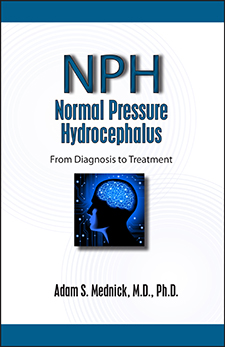From Diagnosis to Treatment
Adam S. Mednick, M.D., Ph.D.
Normal pressure hydrocephalus (NPH) is a neurological disorder that results from an abnormal build-up of cerebrospinal fluid in the brain. The pressure caused by this fluid results in three primary symptoms: unsteadiness when walking, incontinence, and mild dementia. The disorder typically affects the elderly.
Unfortunately, NPH is misunderstood and is often misdiagnosed as other diseases such as Parkinson’s disease or Alzheimer’s. It is estimated that nearly 375,000 Americans have NPH, but only about 11,000 have been treated. However, with the surgical insertion of a shunt in the brain, the symptoms can often be reversed.
The first video below shows an NPH patient walking before shunt surgery. The second dramatic video shows him walking after he received a shunt.
(Videos courtesy of the Hydrocephalus Association.)
Neurologist Adam Mednick, M.D., Ph.D., draws from twenty years experience to provide concise information to help you understand how this disorder is diagnosed and treated. Among the topics he covers:
- Symptoms of NPH
- How NPH develops
- Why your medical history is important
- Medical tests performed to diagnose NPH
- Treatment for NPH—surgical insertion of a shunt
- Types of shunts
- Follow-up care after surgery
Paperback and e-books are available through these online book retailers:
“Thank you, Dr. Mednick , for a job well done. NPH patients and their families will find your book most helpful. You have done a wonderful job of explaining how NPH develops, diagnostic tests, shunt surgery, recovery, and so much more. I highly recommend it.”
—Debbi Fields, Executive Director
National Hydrocephalus Foundation
Dr Steve show appearance by Dr. Mednick
Author Info:

